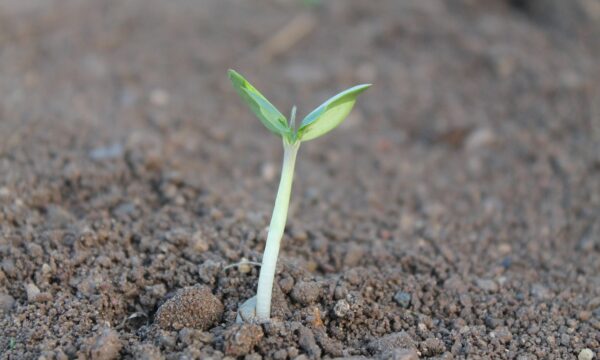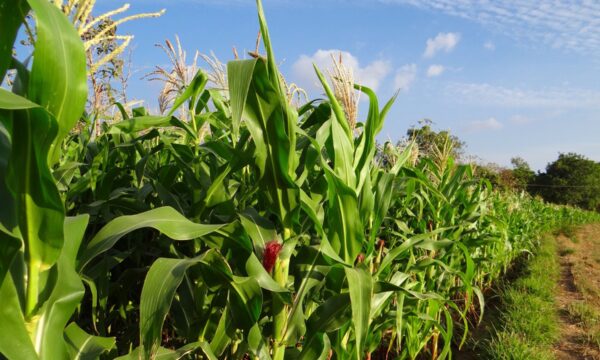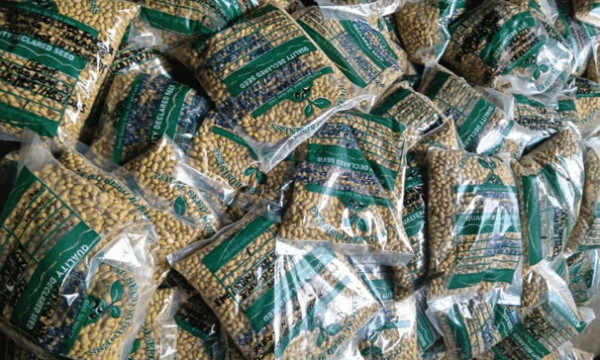Food security can be compromised by a combination of different factors related to the environment, such as the current drought in East Africa. It can also be negatively impacted upon by insect pests that may migrate into new regions, or by native pests that have widened their feeding habits or developed resistance to insecticides. Viruses can also threaten food security and need to be fully understood before their effects can be reduced. Recently a team of scientists have made a breakthrough discovery on how Cucumber mosaic virus actually causes disease.
Cucumber mosaic virus (CMV) has the widest host range of any virus and is one of the most damaging viruses of temperate agricultural crops worldwide. It is also emerging as a major virus, especially in the tropics. The distribution map at Plantwise.org includes over 450 distribution points at subnational and national level, covering every continent apart from Antarctica.
Plants infected with CMV can experience height dwarfing which will result in reduced yields. The fruit may become discoloured through chlorosis, develop an abnormal shape or be reduced in size. It can also cause the appearance of necrotic areas and leaf yellowing by breaking down leaf chlorophyll which gives the leaf its green colour (Images of symptoms).
Accompanying Satellite Genes
But how does the virus cause these symptoms? This is the question that has puzzled scientists since the first virus was discovered in 1892. However scientists have recently found that the CMV virus gene has an accompanying satellite gene which is specific to the host it is attacking and is different for every host it can infect. When the CMV satellite gene finds a matching plant host gene (the “CHL1” gene which is in control of producing leaf chlorophyll) it attaches to it and slices it apart.
By slicing CHL1 it halts chlorophyll production in the leaf which does more than just remove their green colour. Chlorophyll is a pigment involved with energy capture through photosynthesis, without it the plant will experience a reduction in carbohydrate production and plant growth. It leads to chlorosis and CMV disease symptoms.
With this new knowledge the scientists added an extra copy of CHL1 to the plant, which had been modified so that it no longer matched the CMV gene and found that the plant was still able to produce chlorophyll. The plant showed no symptoms of the disease and grew normally.
In their media release CSIRO remarked that “this small change in genetic makeup prevented the plants from becoming yellow and diseased but did not change any other aspects of the plants’ growth, habit or form” suggesting that it will hopefully herald an end to lost crops from Cucumber mosaic virus.
More information on Cucumber mosaic virus and other plant pests and diseases can be found at www.plantwise.org.
Original Media Release can be found here.
2 Comments
Leave a Reply
Related News & Blogs
How plant clinics are strengthening crop health services in Bangladesh
When the first-ever plant clinic in Bangladesh opened in Dhaka in 2013, it initially faced a lack of interest due to its novelty and limited awareness among farmers. However, it went on to expand, providing advice to over 17,000 farmers and led to the…
2 July 2025






[…] warming on insects by Vera Barbosa Cassava – another superhero unmasked? by Claire Shepherd Cucumber Mosaic Virus Stopped by Slicing by Steven […]
Hi. I used these nets (https://www.hortomallas.com/) to prevent fungus growth, I mean my farm advisor that these meshes allows for a aeration which regulates the humidity, I have worked for me in my crop of cucumbers and I’m very satisfied
regards